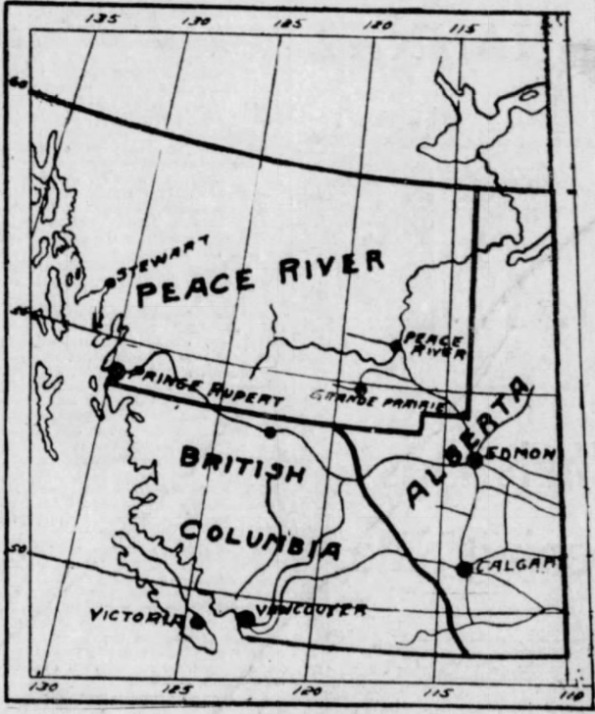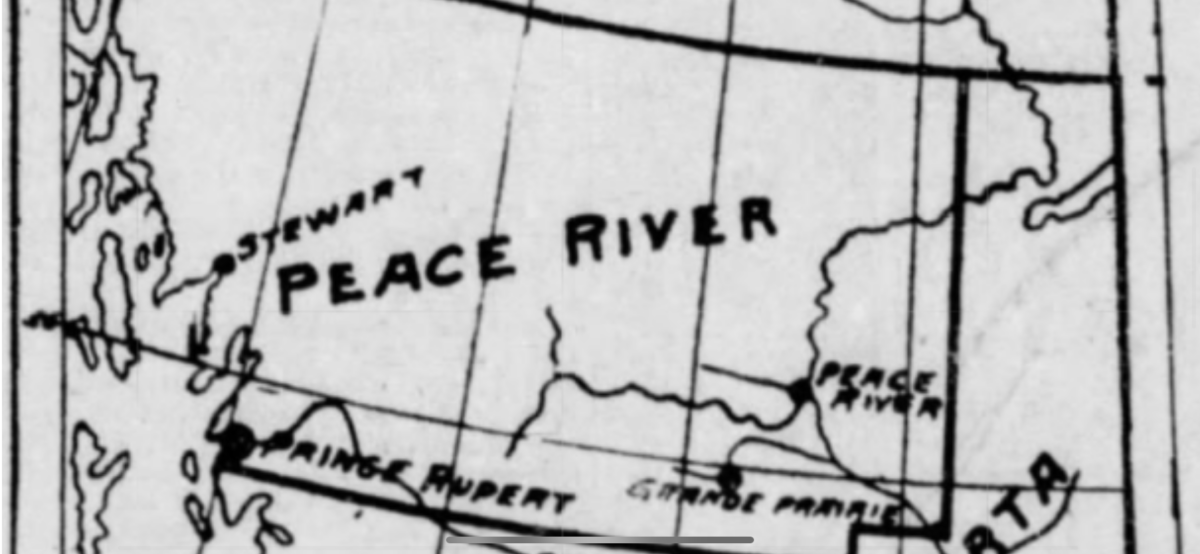As talk of Alberta’s separation from Canada once again bubbles up in certain political circles, as it tends to every decade or two, rarely discussed is the idea of regions separating from Alberta.
Just over one hundred years ago, a movement sprung up in the Peace Country to have the region split off from Alberta and British Columbia to form its own province.

According to a report from The Globe on Nov. 26, 1927, the proposed Province of Peace River would be larger than either British Columbia or Alberta and would include all the Peace River drainage basin in Alberta, in addition to the Lesser Slave Lake region and the City of Prince Rupert, with the Pacific terminus of the Canadian National Railway.
Its most enthusiastic cheerleader was former Peace River mayor Charles Frederick, who, in 1927 published a signed letter in support of Peace Country secession in the newspapers he published, the Peace River Record and Grande Prairie Herald.
In his letter, Frederick stated that public opinion in the then-booming Peace Country favoured “drastic measures to either secure the railway development demanded for years, particularly with respect to an outlet to the Pacific coast, or to demand an opportunity to undertake its own development.”
“So far as Edmonton and Calgary are concerned, these cities ‘view with alarm’ at the prospect of the North country being given he opportunity that should be afforded through the provision of an outlet to the Coast,” Frederick wrote of the region of approximately 30,000 people.
“The remainder of the Province of Alberta is interested in the Peace River country only to the extend of its purchases of goods through Edmonton and Calgary wholesale houses. Vancouver is interested in the Peace River country only as another source of supply for its elevators, and as an outlet for the wholesale trace of its merchants.”
Frederick maintained in his letter that the promises made to Peace River settlers were not kept. “Dominion and provincial governments alike,” he wrote, “have neglected the claims of this fertile northern district.
Pointing to the Peace Country’s region’s rich soil, he then claimed the region would become “wealthier, more populous, a more valuable contribution to the nation of Canada than either of the mother provinces of Alberta and British Columbia.”
Earlier that year, the world’s prize for wheat at the Chicago international fair was reported to have been won by a Peace Country farmer.
“Let the Peace River country paddle its own canoe,” wrote Frederick.

Dismissing the idea of Peace River secession outright was local United Farmers of Alberta MLA Hugh Allen.
Allen spoke about the issue in the Legislative Assembly in Feb. 1928.
In his opinion, the idea was more of a “publicity” stunt than anything else, according to a report by the Edmonton Bulletin. Allen told the Assembly that there had been some serious thought given the subject in sections of British Columbia, but “the majority of deep thinking Peace Riverites had never taken kindly to the proposal.”
Premier John Brownlee was also an enthusiastic opponent of the idea of the Peace Country leaving Alberta. He toured the region numerous times in the following years to appeal to demonstrate the Alberta government’s commitment and investments in the Peace Country.
Frederick’s Peace River secession movement did not get the political traction it needed to actually form a new province, which would likely involve a complicated constitutional process, but it is also likely that this was not a top priority during the Great Depression that followed only a few years later.
Since then, there have been a handful of calls by locals elected officials in northern British Columbia for the largely conservative voting region to join Alberta, but the provincial boundaries established in 1905 remain in tact.

